Why you can trust Tom's Hardware
Our HDR benchmarking uses Portrait Displays’ Calman software. To learn about our HDR testing, see our breakdown of how we test PC monitors.
The EX3210U is the best HDR monitor I’ve yet seen from BenQ because ut finally has a dynamic contrast option. This is something other Mobiuz monitors have lacked, and it makes their HDR lackluster by comparison.
HDR Brightness and Contrast
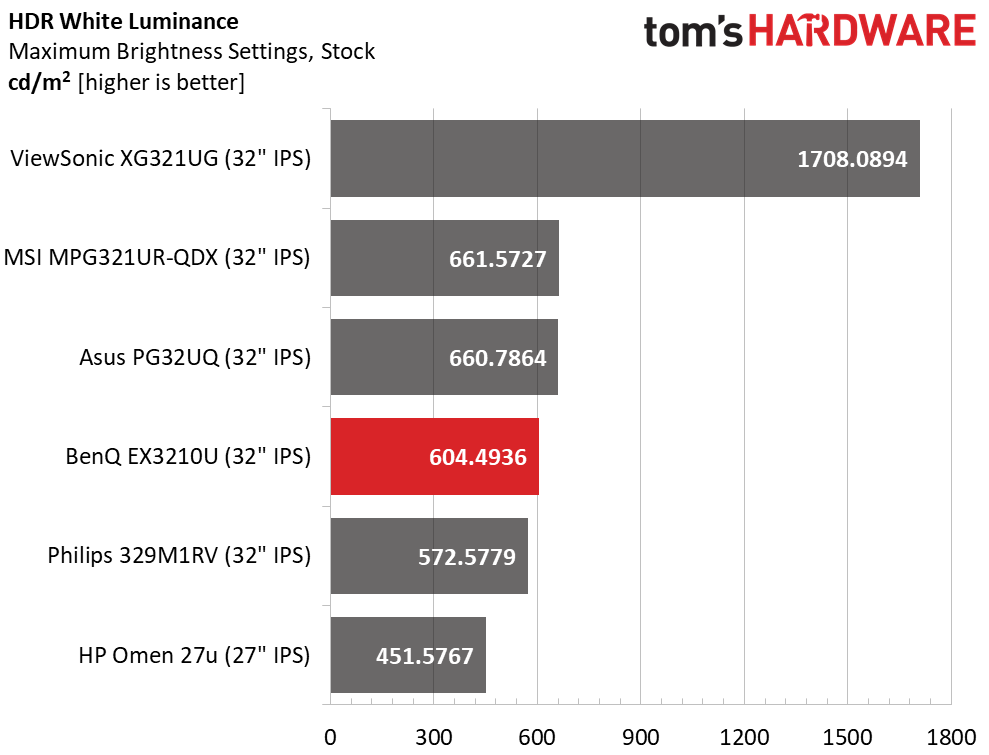
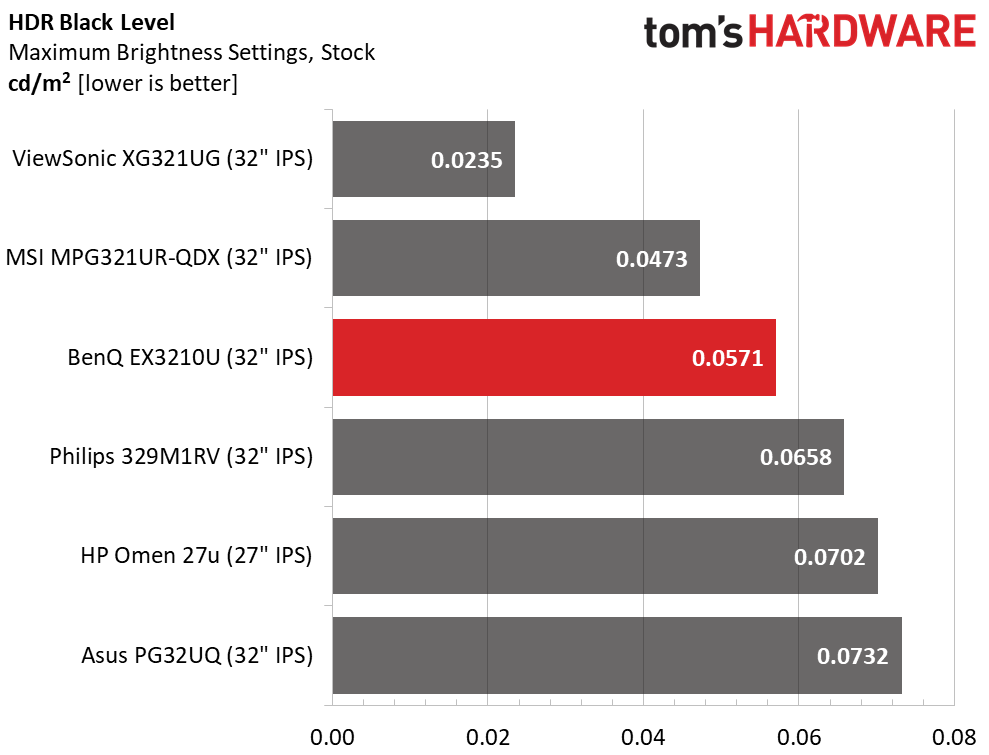
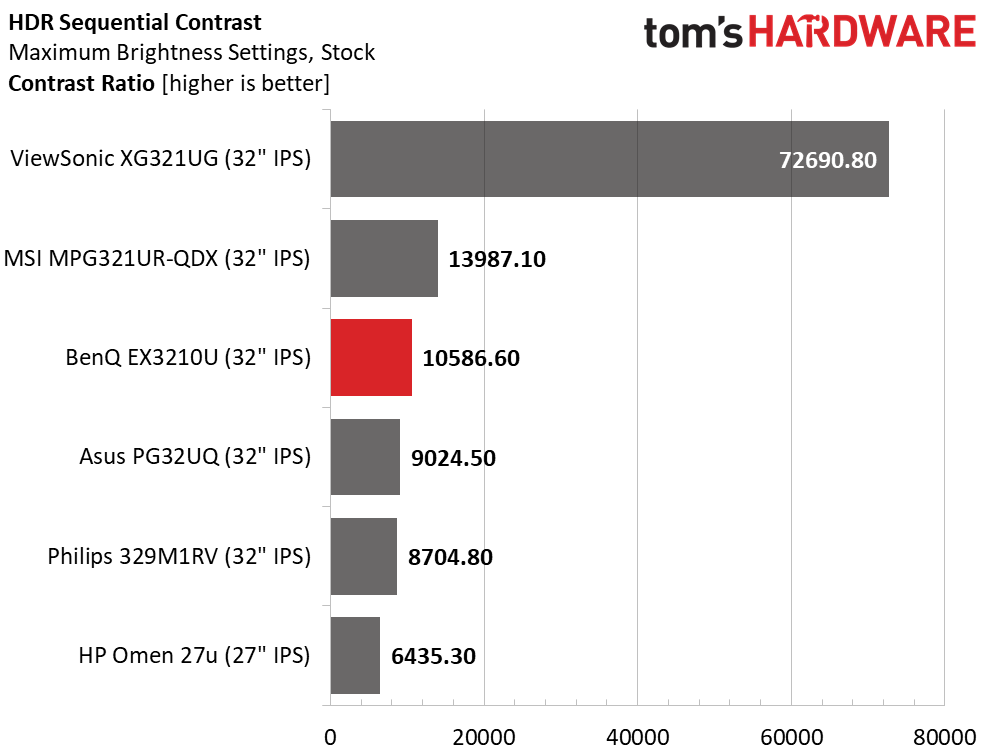
The EX3210U beats its VESA DisplayHDR 600 certification with an output of just over 604 nits. I had to measure a 25% window pattern to meet this using the monitor’s zone dimming edge backlight. To record the black level, I had to use an info bug because a full black field pattern shut off the backlight completely. The resulting contrast puts the EX3210U in a high percentile. Only a few monitors can top 10,000:1 in this test. Some sort of zone dimming is required and I’m glad to see BenQ finally doing this. Better contrast than this is only available with a full array backlight or an OLED panel.
Grayscale, EOTF and Color
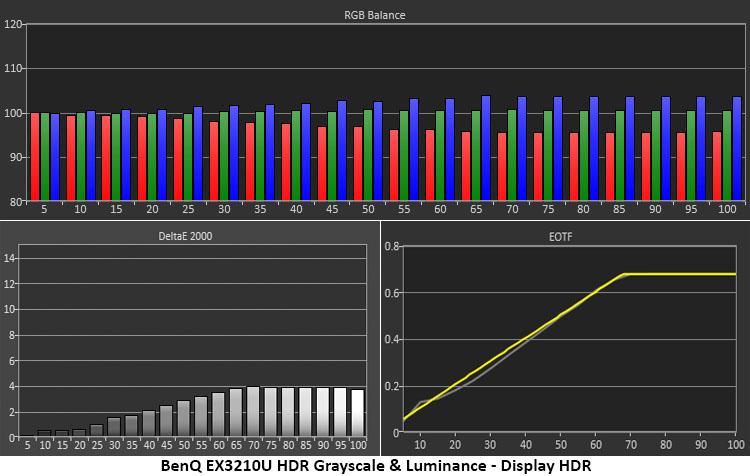
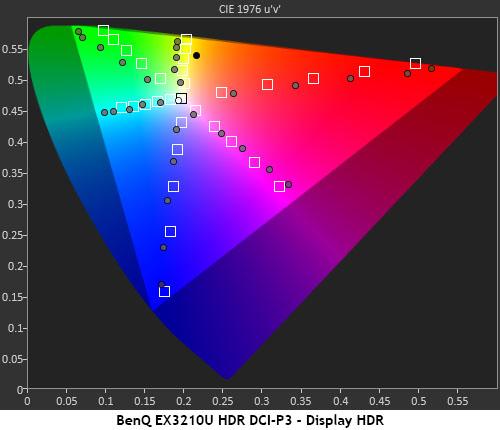
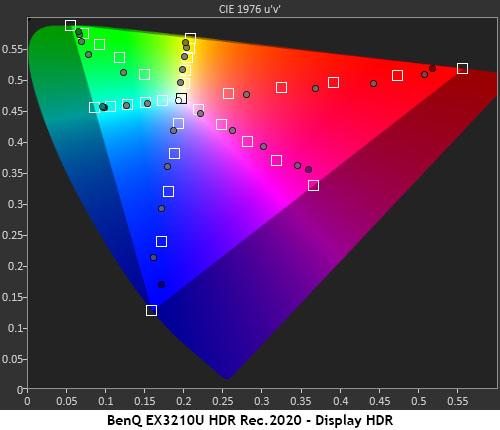
The default picture mode for HDR10 signals is Display HDR and it is the best choice for appearance and accuracy. There is a barely visible blue tint in the brighter steps, but this does not impact actual content. You’ll only see these levels in tiny specular highlights, not in large areas of the image. The EOTF tracks perfectly with only a tiny hump at 10% and ideal tracking to the 65% transition point. This is excellent performance.
HDR content comes mastered to both DCI-P3 and Rec.2020. The EX3210U tracks both standards very well. Both are slightly over-saturated at the inner targets, typical of the HDR monitors I’ve tested. Tracking is linear until the monitor runs out of color at the triangle boundaries. The good part is that all HDR content will be correctly rendered regardless of the intended gamut. Hue targets are also in line, which means HDR color will be both natural and impactful.
Get Tom's Hardware's best news and in-depth reviews, straight to your inbox.

Christian Eberle is a Contributing Editor for Tom's Hardware US. He's a veteran reviewer of A/V equipment, specializing in monitors. Christian began his obsession with tech when he built his first PC in 1991, a 286 running DOS 3.0 at a blazing 12MHz. In 2006, he undertook training from the Imaging Science Foundation in video calibration and testing and thus started a passion for precise imaging that persists to this day. He is also a professional musician with a degree from the New England Conservatory as a classical bassoonist which he used to good effect as a performer with the West Point Army Band from 1987 to 2013. He enjoys watching movies and listening to high-end audio in his custom-built home theater and can be seen riding trails near his home on a race-ready ICE VTX recumbent trike. Christian enjoys the endless summer in Florida where he lives with his wife and Chihuahua and plays with orchestras around the state.
-
helper800 Considering the price of these bigger 4k 120-165hz IPS monitors I think it's almost always better to get an OLED of some kind in its place. OLED is so much better looking than IPS or MVA panels and they can be just as accurate with the colors and have competing viewing angles. The new QD-OLED panels that Samsung uses are the cream of the crop as far as panel technology. I dont understand how these companies sell these 900+ dollar non-OLED panel monitors...Reply -
gallovfc Too big... I'd have to get rid of the secondary monitor...Reply
28" is already the limit... -
helper800 Reply
I thought the same about greater than 27 inch monitors, but I have grown more and more in love with my 31.5 inch 4k Samsung monitor.gallovfc said:Too big... I'd have to get rid of the secondary monitor...
28" is already the limit... -
geok1ng You had me until the responde time chart. Judging from the image, 6ms on the MSI is 75% faster than 7ms on the other monitors. I remember a time when graphs helped us to faster understand a content. Now i must triple check numbers and Fine print before coming up to a conclusion about a graph.Reply -
Abhishek981 I read reviews on this monitor. I saw that some users have returned this product due to a dead pixel at the middle of the screen.Reply
I want to confirm, if the monitor has this problem or not, if someone is using this.